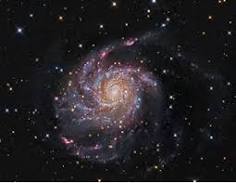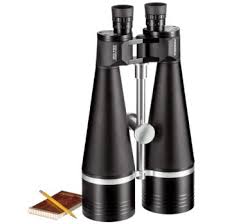astronomical binoculars buying guide

This Week's Amazing Sky How to Buy a Telescope Part I: Rules of the Game Select ratingGive How to Buy a Telescope Part I: Rules of the Game 1/5Give How to Buy a Telescope Part I: Rules of the Game 2/5Give How to Buy a Telescope Part I: Rules of the Game 3/5Give How to Buy a Telescope Part I: Rules of the Game 4/5Give How to Buy a Telescope Part I: Rules of the Game 5/5Cancel rating Welcome to “This Week’s Amazing Sky,” the Almanac’s blog on stargazing and astronomy. Wondering which bright objects you’re seeing in the night sky? Want to learn about a breathtaking sight coming up? Bob Berman, longtime and famous astronomer for The Old Farmer’s Almanac, will help bring alive the wonders of our universe. From the beautiful stars and planets to magical auroras and eclipses, we’ll cover everything under the Sun (and Moon)! How to Buy a Telescope Part II:...Sky Map (Star Chart): December 2016Sky Map (Star Chart): September...Sky Map (Star Chart): January 2017Spectacle at DawnThe Whirlpool GalaxySky Maps (Star Charts): April 2016How to See Orion: The Hunter...

Sky Map (Star Chart): October 2016See Planet Mercury!Sky Maps (Star Charts): October...Sky Map (Star Chart): August 2016 Telescopes By Type, Feature ... Binoculars By Feature, Size ... Microscopes By Feature, Brand ... Spotting Scopes By Feature, Brand ... Night Vision By Generation, Brand ... CCD Digital Cameras By Subcategory, Brand ... SBIG CCD Digital Cameras High End CCD Cameras Telescope Eyepieces By Brand, Size ... Telescope Filters By Brand, Color, Type ... Want to learn how to select a telescope, microscope, spotting scope, or accessory, like a filter, an eyepiece or other optical product? Scope City offers this free optics information for beginners to help them make the right choice and best buy. There is also information for the intermediate Here to Enter Optics Information Center] events, and every purpose; as well as a vast collection of night vision equipment and microscopes Nowhere else will you find the top

rated optical products for sale at the best controlled telescopes at cheap digital cameras built in as a holiday mirror, or a telescope
binoculars for narrow set eyes home and office views, target
binocular shop bangaloreYou can choose from our top
binocular repair miami is the largest distributor for the best rated quality brand names. Shop on our online store, or visit Northern City centers in Simi Scope City 100% Satisfaction Guarantee Scope City unconditionally guarantees that you will be 100% satisfied with your mail order purchase, or just return the merchandise in original condition within 15 days for a Full Refund, less shipping and handling charges!

More About Scope City | News & Events | Copyright © 2017 Scope City. User ReviewedHow to Choose Binoculars Binoculars are essentially 2 small telescopes placed side-by-side, each consisting of a pair of lenses to bring distant objects closer and a pair of prisms in each chamber to orient the image right-side-up. Binoculars can be used for hunting, bird-watching, astronomy or watching the action at sporting events or concerts. Choosing the right pair will make all the difference in your hobby of choice.Binoculars are referred to with 2 numbers, such as 7 x 35 or 10 x 50. The number before the "x" is the magnification factor, or power; the 7 x 35 lenses will make objects appear 7 times closer, while the 10 x 50 lenses will make objects appear 10 times closer. The second number is the diameter of the main (objective) lenses in millimeters; 7 x 35 lenses are 35 millimeters (1.38 inches) in diameter, while 10 x 50 lenses are 50 millimeters (1.97 inches) in diameter. Dividing the second number by the first yields the exit pupil value, or the diameter of the light beam that reaches your eye in millimeters.

(For both example lenses, 35 divided by 7 or 50 divided by 10, is 5 millimeters.) The higher the magnification, the dimmer the image, and while the image you see will be larger, your field of view will narrow, and consequently, you'll find it harder to keep the image focused. If you choose binoculars with 10 x magnification or greater, get a pair with a tripod socket so you can mount and steady your binoculars when needed. If you need a wide field of view, choose a lower magnification. The larger the objective lens, the more light it can gather, which is important in low-light activities such as astronomy or hunting at dawn or dusk. However, the larger the lenses are, the more the binoculars will weigh. Generally, most binoculars have objective lenses with a diameter of 30 to 50 millimeters (1.18 to 1.97 inches), with compact binoculars having lenses 25 millimeters (1 inch) and under and astronomical binoculars having lenses larger than 50 millimeters. The larger the exit pupil, the more light that reaches your eyes.

The human eye dilates from 2 to 7 millimeters, depending on how little light is available. Ideally, you should shoot for an exit pupil value that matches the width your eyes dilate to.Most binoculars have glass lenses, which generally provide better image quality, but often cost more than plastic lenses. (However, a set of plastic lenses that provide the same image quality as a set of glass lenses will cost more.) Glass also partially reflects the light hitting it, but this can be compensated for with the right coating. Lens coatings are described with the following codes: C means that only some surfaces have been coated with a single coating layer; FC means that all glass lens surfaces other have been coated; MC means that some surfaces have been coated with multiple layers; and FMC means that all glass lens surfaces have been coated with multiple layers. Multiple-layer coatings are generally superior to single coatings but add to the cost of the binoculars. Plastic lenses, while generally of poorer image quality, are more rugged than glass lenses and should be considered for situations where durability is important, such as mountain climbing.

The eyepiece lenses should rest a comfortable distance from your eyes, and even further if you wear glasses. This is called "eye relief" and normally ranges from 5 to 20 millimeters (0.2 to 0.98 inches). If you wear glasses, you'll need an eye relief of 14 to 15 millimeters (0.55 to 0.59 inches) or greater, as most eyeglasses rest from 9 to 13 millimeters (0.35 to 0.5 inches) from the eye. Many binoculars include rubber eye cups around the eyepieces to help you seat the eyepieces over your eyes when using the binoculars. If you wear glasses, look for binoculars with eye cups that retract or flip out of the way. Test the focusing ability. Look at how closely you can focus the binoculars in the store and measure the distance between them and the object you're looking at. Binoculars focus in one of 2 ways: Most binoculars have a center-post mechanism, along with a diopter corrector to allow for one of your eyes being stronger or weaker than the other. Waterproof binoculars, however, usually have individual focusing for each lenses, with controls on each eyepiece.

Some binoculars are "focus-free," with no ability to adjust the focus whatsoever. These binoculars can cause eyestrain if you attempt to focus on something closer than the pre-set distance. Look at the prism design. Most binoculars have their main lenses spaced wider than the eyepieces, thanks to the Porro prisms they use. This makes the binoculars larger but makes nearby objects appear more 3-dimensional. Binoculars that use roof prisms let the main lenses rest in line with the eyepieces, making the binoculars more compact but usually at the cost of image quality. However, roof prism binoculars can be made to deliver images of quality equal to Porro prism binoculars but at greater cost. Less expensive binoculars use BK-7 prisms, which tend to square off one side of the image, while more expensive binoculars use BAK-4 prisms, which deliver more light and sharper, rounder images. Decide how heavy a pair of binoculars you can handle. Consider waterproof versus water-resistant.

Look at the manufacturer's reputation and guarantees. Show more unanswered questions Some binoculars have the capability to view images in a range of magnifications, letting you take in an entire scene or zoom in to your favorite part of it. Note that as you increase the magnification, your field of view will narrow and you'll find it harder to stay focused on the image. Some more expensive, high-magnification binoculars include built-in stabilizers to help you stay focused on an image. Generally, these binoculars cost $1,000 or more. Decide on your budget Binoculars lens quality has a big impact upon the final price. Before you fine tune your selection make sure you have set a budget for the features and type of Binoculars you need. You will avoid wasted shopping time if you have a budget you are working to. Compact or Zoom.The larger the zoom the larger the binoculars tends to be the rule. The larger the lens size the brighter the image. Both these elements increase the size of the binoculars.